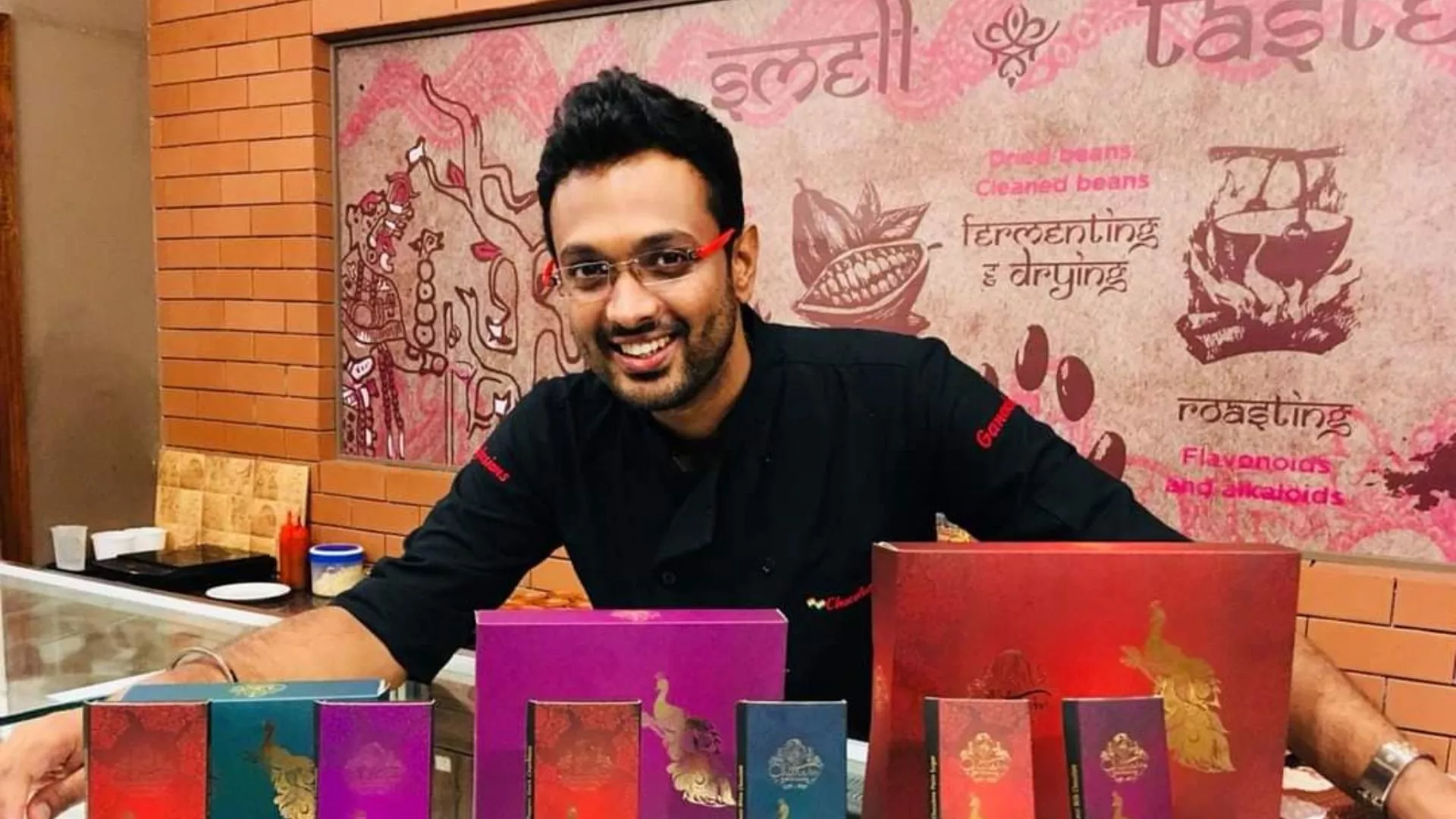U.S. universities offer STEM students the choice of diversifying in other fields with an all-round education that can jump-start fascinating careers.
October 2022

Arun Viswanathan S.K. showcases award-winning chocolates from DnD Foods. He discovered his passion for food science through his flexible STEM curriculum experience at Cornell University. (Photograph courtesy Arun Viswanathan S.K.)
The United States is a global leader in STEM higher education, offering top-ranked institutions and lucrative career opportunities. According to the 2021 Open Doors Report by the Institute of International Education, the United States welcomed over 914,000 international students. Indian students represented nearly 20 percent of this total, with 167,582 students in the 2020-21 academic year. The report also revealed that 78.3 percent of Indian students who went to the United States for higher education were enrolled or worked in STEM fields during 2020-21.
STEM is an education grouping that refers to studies in the areas of science, technology, engineering and mathematics. It encourages the idea of students learning aspects of all four curriculums in a flexible and interdisciplinary approach. Rather than the four disciplines being taught as separate subjects, a flexible STEM curriculum—as is the norm followed by most universities in the United States—integrates them so that students are more well-rounded problem-solvers and better prepared for real-world applications.
Flexible curriculum
Arun Viswanathan S.K. from Coimbatore discovered his passion for food science through his flexible STEM curriculum experience at Cornell University. Even though Viswanathan studied biotechnology as his undergraduate major at Tamil Nadu Agricultural University (TNAU), he knew he wanted to do something different. “I found it hard to clearly define my academic goals. I loved science but did not enjoy mathematics,” he says. “In the United States, I freely walked into a class that did not teach a subject directly related to my stream of study—just to experiment with it. This flexible structure allowed me to deviate from a linear path and discover something that truly enraptured me.”
Viswanathan was selected for a full scholarship Cornell University/TNAU dual degree masters program to study food science and technology at Cornell and food processing and management at TNAU. “The food industry drew me in by way of it being more of an art form, based in science,” he says. “I never feel like doing things which are run-of-the-mill. At Cornell, whenever I came up with wild ideas about the kind of unconventional research I wanted to carry out, I had the backing of my professors.” Viswanathan’s passion for food science led him to form DnD Foods, the parent company responsible for creating award-winning chocolates that are shipped throughout India and now branching into retail.
Diverse exposure
Smaran Mallesh from Bengaluru went to Ohio State University’s Austin E. Knowlton School of Architecture to expand his design vision through exposure to new perspectives. “I was always interested in studying in the United States, and wanted to study at a university which would allow me to interact with students from varying backgrounds and verticals,” Mallesh says. “When I went through the STEM course material at the Knowlton School of Architecture it was very clear to me that the courses offered me aspects that I hadn’t been exposed to in my undergraduate studies. I was interested in the prospect of taking classes in other disciplines other than architecture, and Ohio State University’s STEM curriculum allowed me to do that.”
 Cloaked Residence in Bengaluru, part of Smaran Mallesh’s work at Cadence Architects, which was shaped by his exposure to the non-architecture courses with the flexible STEM curriculum at Ohio State University. (Photograph courtesy Smaran Mallesh)
Cloaked Residence in Bengaluru, part of Smaran Mallesh’s work at Cadence Architects, which was shaped by his exposure to the non-architecture courses with the flexible STEM curriculum at Ohio State University. (Photograph courtesy Smaran Mallesh)
Exposure to different STEM disciplines had a profound effect on Mallesh’s growth as an architect. “OSU’s flexible curriculum gave me a very good perspective of where I stood in my profession,” he shares. “At the end of the course, I had a comprehensive understanding about my field from multiple vantage points—my STEM courses gave me the confidence to step out into the professional world and stake a claim for myself by establishing an identity of my own.”
Today, Mallesh’s architecture studio, Cadence Architects, has won over 30 awards for its innovative designs. The firm’s work was recently showcased in the London Design Biennale’s India pavilion.
In January 2022, the U.S. Department of Homeland Security announced that 22 new fields of study would be added to the STEM Optional Practical Training (OPT) program to enhance opportunities for international students studying STEM and support the growth of the U.S. economy and innovation. The new fields of study include general forestry, human-centered technology design, cloud computing, anthrozoology, climate science, economics and computer science, business analytics, data visualization, industrial and organizational psychology, and social sciences, research methodology, and quantitative methods.
The STEM OPT program allows F-1 visa students earning bachelor’s, master’s or doctoral degrees in a wide range of STEM fields to remain in the United States for up to 36 months to work in their field of study.
Jason Chiang is a freelance writer based in Silver Lake, Los Angeles.
COMMENTS